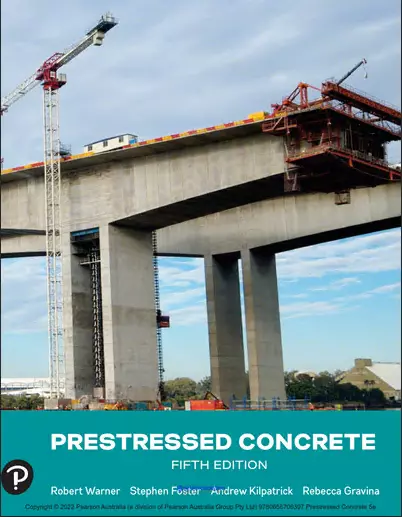Prestressed Concrete Fifth Edition Warner Foster Kilpatrick Gravina
When the first edition of this book appeared, more than thirty years ago, prestressed concrete and reinforced concrete were considered to be separate and distinct materials of construction. In Australia, different design standards had to be used for the two materials. At that time, prestressed concrete was designed to remain uncracked under full working load, using elastic analysis and allowable stress concepts.

The apparent gulf between reinforced concrete and prestressed concrete was exaggerated by severe restrictions that were placed on the use of partial prestressing by the then-current prestressed concrete standard, AS 1481.
One of the main aims of the first edition of this book was to present a rational and unified approach to the analysis and design of prestressed concrete, and hence to encourage designers to choose freely from the full range of design options, including reinforced concrete and any appropriate level of prestress.
Download
*
When the first edition of this book appeared, more than thirty years ago, prestressed concrete and reinforced concrete were considered to be separate and distinct materials of construction. In Australia, different design standards had to be used for the two materials. At that time, prestressed concrete was designed to remain uncracked under full working load, using elastic analysis and allowable stress concepts.

The apparent gulf between reinforced concrete and prestressed concrete was exaggerated by severe restrictions that were placed on the use of partial prestressing by the then-current prestressed concrete standard, AS 1481.
One of the main aims of the first edition of this book was to present a rational and unified approach to the analysis and design of prestressed concrete, and hence to encourage designers to choose freely from the full range of design options, including reinforced concrete and any appropriate level of prestress.
Download
*